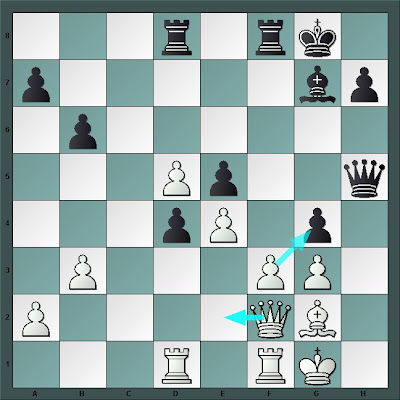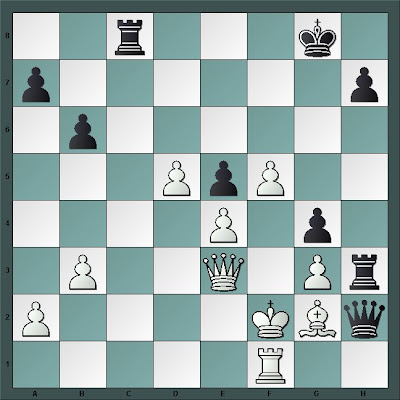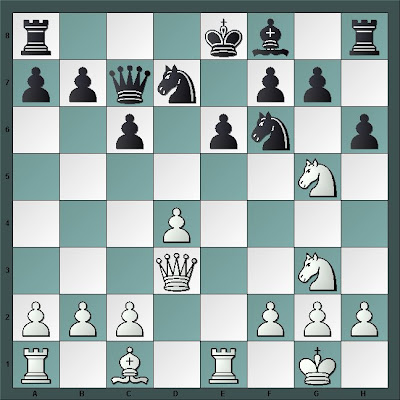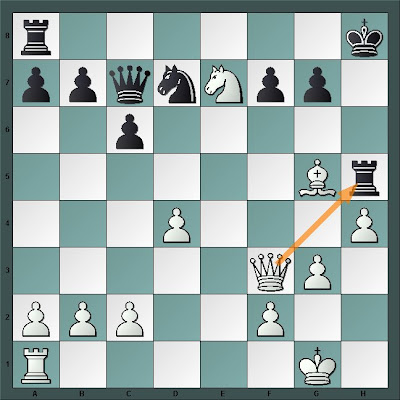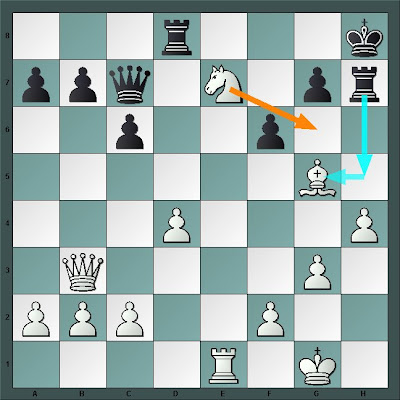Rafee Persitz, who died last Thursday, was perhaps the greatest natural chess talent in Israel. As a 20-year-old, he made an excellent 7.5/9 score in the 1954 students' Olympaid (playing second board) and made a very respectable show in the famous Hastings tournament in the mid-1950s. He was also Israel's first blitz champion. From 1958 to 1962, as the
obituary (by
Israel Gelfer, in Hebrew) on the Israeli Chess Association's web site says, he was probably the strongest Israeli player -- defeating, to name a few,
Czerniak,
Porat,
Aloni, and others, and representing Israel in the Leipzig (1960) Olympiad, making a very respectable 60% score, the second-best on the team. As a student in Oxford, he defeated
C. H. O'D. Alexander, the former British champion, as the
chessbase obituary (with a photo) notes.
What's more, he did all this when an amateur who only spent a little time on chess. As
Moshe Czerniak noted in his book
Israel be'Olympiadot ha'Shachmat [Israel in the Chess Olympiads] (Tel Aviv: Rotem Press, 1979), p. 67: 'It's a pity Rafee Persitz doesn't devote more time to chess. He should have been an excellent International Master by now.' Persitz probably never considered making chess a serious career -- he studied economics and became a well-known financial analyst. Perhaps his fights with the Israeli Chess Association's administration had something to do with it. As is well known in Israeli chess circles, he once sent a letter to the ICA which began, "Dear honorable gangsters, ...".
His over-the-board achievements notwithstanding, he would probably be remembered not only for his natural talent, but for his for his excellent written analysis. As the
chessbase obituary (with a photo) notes, he contributed for a long time to the
British Chess Magazine's 'The Student Corner'.
Yochanan Afek adds in this obituary that Persitz wrote 'a couple of Hebrew chess books'. That is slightly inaccurate -- there were three, in fact:
1.
Tacharut Amanim Be'Sachmat: Yerushalaim - Tel Aviv - Heyfa 1952 [Masters' Chess Tournament: Jerusalem - Tel Aviv - Haifa 1952] (Tel Aviv: Amanut Press, 1953).
2.
Israel ba'Olympiadot: Helsinki - Amsterdam - Moskva: Skirat ha'Pticot u'Mivchar Siyumim [Israel in the Chess Olmypiades [
sic] Helsinki - Amsterdam - Moscow : A Review of the Openings and Selected Endings] (Tel Aviv: Mofet Press, 1958).
- both with co-author
E. A. Mandelbaum; and
3.
Ha'Derech ke'Nitzachon be'Shachmat: Mivchar Kravotav shel I. Y. Keniazer [The Way to Victory in Chess: Selected Games of I. Y. Keniazer] (Tel Aviv: Torat ha'Sachmat Press, 1959).
All these books show deep analysis -- especially opening theory -- that is not only objectively very good, but, more importantly, far above what was then common in the Hebrew chess literature. For example, the last book typically has three or four pages of analysis concerning the first ten moves. Compare to a typical Hebrew-language book from that period --
Shaul Hon's
Petichot be'Shachmat [Chess Openings] (Tel Aviv: Magen Press, 1957, 1958, 1964). Hon's book -- despite being an opening manual and popular enough to be reprinted twice -- usually only gives a page, or half a page, to the same number of moves.
Requiscat in Pace.
